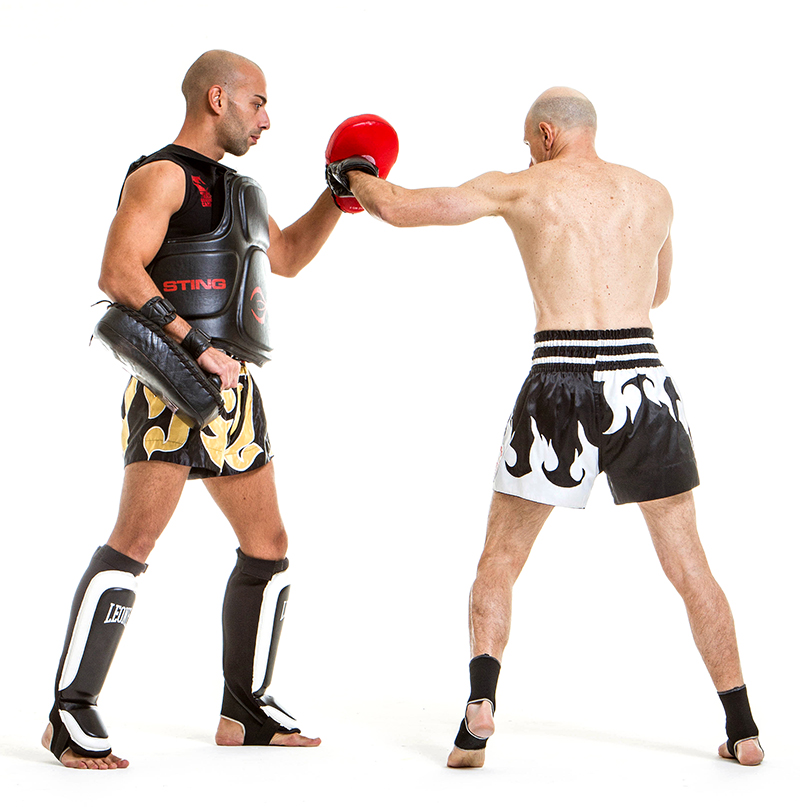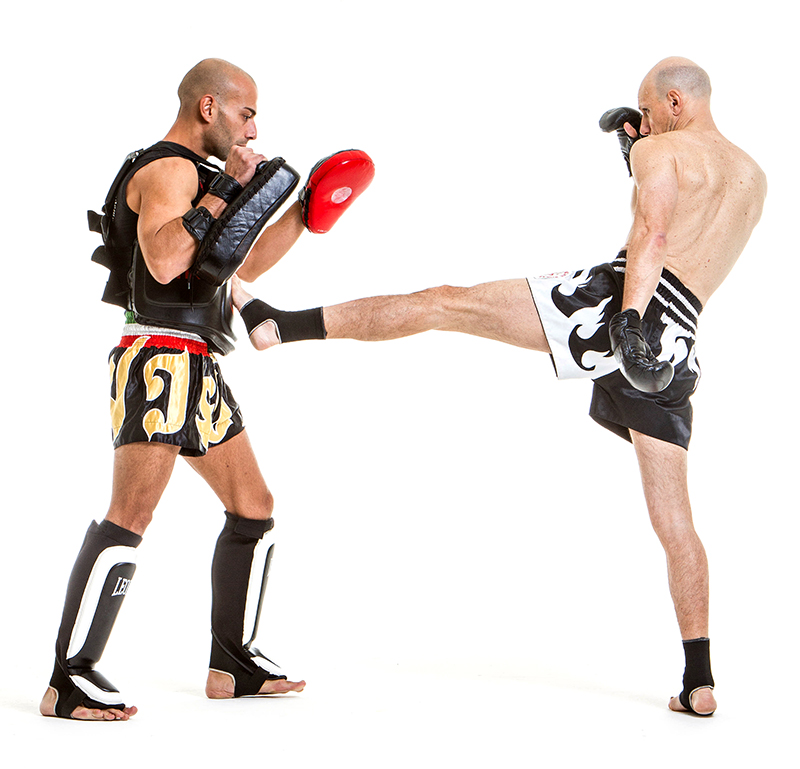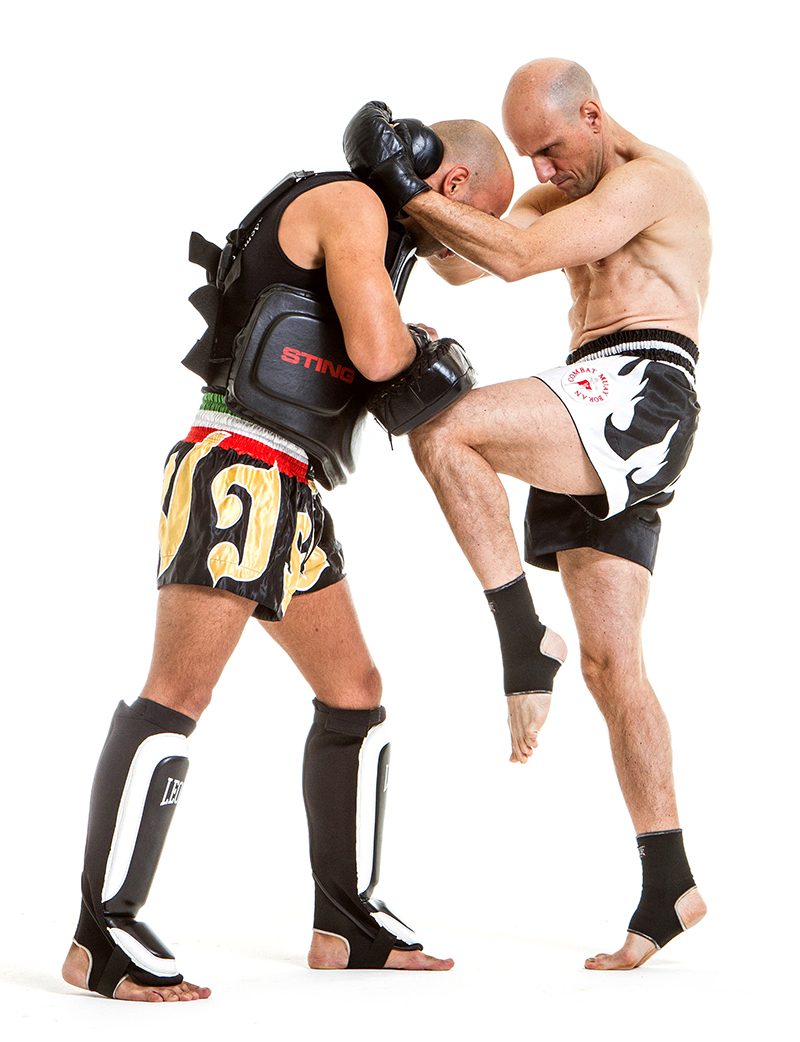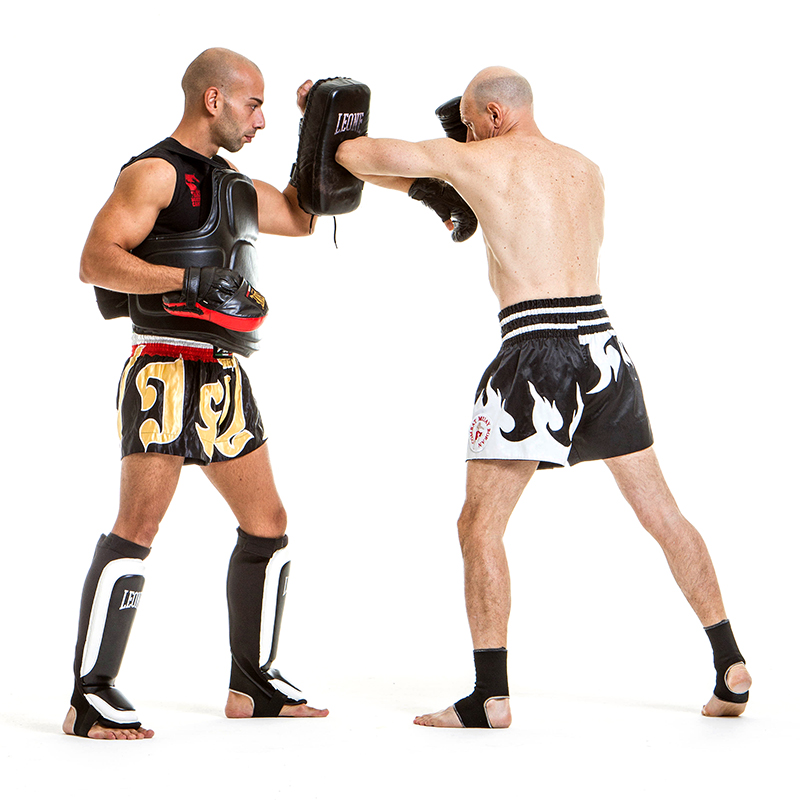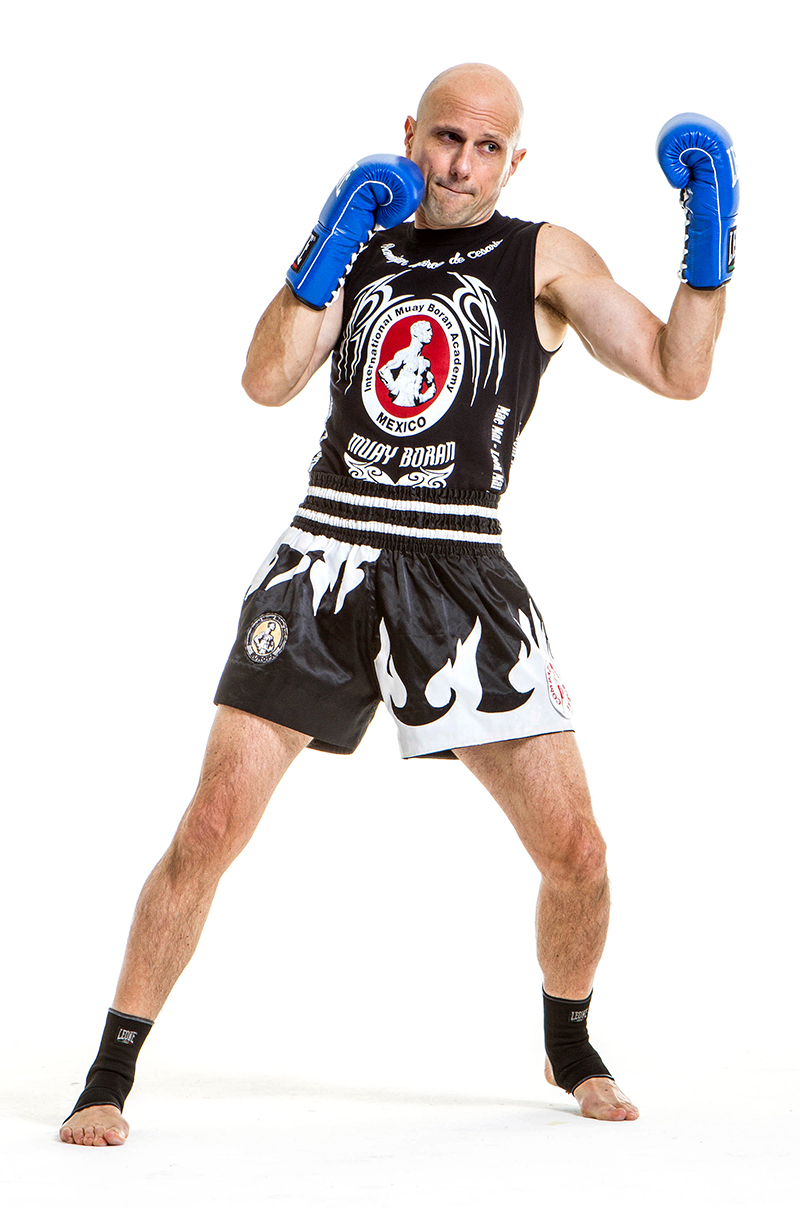
Style makes fighters: the 5 types of Thai Boxer
Muay Thai at its highest level may be compared to a chess game: both contestants make use of their bodies and minds to out-smart each other. Body and mind must work as one if a fighter’s full potential is to be developed. Every Nak Muay (Muay fighter) is a unique entity; in fact it is impossible to find two who share exactly the same characteristics. One of the common mistakes of trainers with little experience is to train all students in the same way. Many times those coaches use the same standard schedule to train fighters that have very little in common in terms of physical and psychological attributes. A fighter with a definite tendency towards sidestepping and counter-fighting cannot be trained like another one who instinctively stalks his opponents and looks for in-fighting. Similarly, some thai boxers are natural kickers while others are at ease at grappling range: a given training system may be good for the former and detrimental for the latter. A good Khru Muay (Muay teacher) should be able to detect the strong and weak points of his students and train them in order to enhance their attributes as much as possible. Furthermore, a chain is as strong as its weakest link: similarly a fighter’s weaknesses must be exposed, analysed and someway corrected. Working with human material is extremely difficult because everything is fluid, nothing stays the same for a long time. Training fighters is an ever changing job: only a vast first-hand experience can teach a Muay Thai trainer to cope with the infinite nuances of the process of turning a would-be thai boxer into a real champion. A good starting point is to check the characteristics of a new student according to 5 broad categories of Muay Thai “stylists”: every boxer has a natural tendency towards one of these 5 types. However, a trainer’s job is to combine the main attitude of a fighter with some additional features taken from one or more of the other categories. For example, a strong natural puncher will need some extra skills taken from the kicker’s technical expertise to become really competitive.
Most Muay Thai teachers accept the following 5 categories: the puncher, the kicker, the grappler, the sapper, the all-rounder. Let’s see the characteristics of each category.
1. The puncher.
• Physical attributes. A powerful puncher usually has strong shoulders and arms.
• Favorite range. A puncher is a middle range fighter. When he is too close or too far from the opponent, his weapons (punches) lose a lot of their power. Therefore, in order to drop his bombs he is forced to maneuver to be at the only useful distance, all the time. It is clear that his opponents will do their best to keep him at bay with kicks or will try to grab him and wrestle, thus preventing him from throwing forceful strikes.
• Complementary techniques. Usually the puncher will complement his arsenal with a few kicking techniques. As a matter of fact, most punchers are also lethal low-kickers: leg kicks are used to hurt, confuse and off-balance and they pave the way to powerful head or body punches that very often can lead to a dramatic knock-out.
• Classic example among Thai fighters: Kaosai Galaxi
2. The kicker.
• Physical attributes. Physically, the best kickers are tall with long legs.
• Favorite range. This kind of thai boxer is the typical out-fighter. Long range is the distance where he is more at ease because straight kicks and swing kicks are his weapons of choice. Swing shin kicks to the liver, neck, temple or nape are ranked among the most lethal blows a human being can deliver. If one of these kicks hits you with enough power, your chances to stay on your feet are close to zero. However, if the opponent manages to close the gap and stick to the kicker, he will deprive the leg strikes of most of their force and will probably defeat him.
• Complementary techniques. In order to full fill the gaps in his fighting strategy, a kicker must enrich his arsenal by means of a short or middle range weapon. Famous kickers, like Pud Pad Noi were also feared for their prowess with elbow strikes. When the opponent has managed to close the gap and is starting to work, the “complete” kicker quickly cuts through his adversary’s defences with one or more fearsome elbow slashes. A serious wound or a quick stoppage is often the expected result.
• Classic examples among Thai fighters: Pud Pad Noi Worawoot
3. The grappler.
• Physical attributes. Good grapplers are equipped with strong neck and back muscles. Muay Thai grapplers favour neck clinching instead of body holding. Therefore, the best Muay Thai grapplers are tall with long arms, physically different from greco or freestyle wrestlers.
• Favorite range. The grappler’s attitude is to stalk the opponent, closing the gap with quick forward steps or with jumping attacks to cut the distance as fast as possible. A grappler is typically an aggressive fighter: when he is far from the opponent or when he finds himself at middle range he can be outsmarted by a good kicker or a strong puncher, respectively.
• Complementary techniques. In order to safely close the gap and start to grapple, a pre-emptive strike is used most of the times. The strike can be a head or body punch or a middle swing kick. Sometimes, one of these complementary techniques becomes a second point of strenght: this is the case of Samson Isarn, a typical example of Muay Thai grappler who also possessed a hard punch that, after his career as a thai boxer, allowed him to become international boxing world champion.
Classic examples among Thai fighters: Diesel Noi
4. The sapper.
• Physical attributes. Sappers come in all sizes and shapes. No specific physical attribute is needed to unleash effective elbow strikes. Technical prowess is all that’s needed to become an expert in this style.
• Favorite range. This stylist is the typical short range fighter. However, since the elbow is a concealed weapon, before using it a thai boxer has to fight the fight without showing his intentions. When the opponent gets caught in the sapper’s web (he stops focusing his attention on the expected elbow attack), the elbow specialist will make his magic trick. The opponent will find himself badly cut or lying on the mat without even understanding what’s happened.
• Complementary techniques. A typical beginner’s mistake is to try and throw elbow strikes form kicking or punching distance. Before elbowing, a fighter must be at the right (short) distance and to get there he must be sufficiently skilled in kicking and punching. When the situation (i.e., the distance) is right, instead of grappling he must seize the moment and strike before the optimal position is lost.
Classic example among Thai fighters: Pol Pra Pradang
5. The all-rounder.
• Physical attributes. Just like sappers, all-rounders come in all sizes and shapes. No specific physical attribute is needed to develop a well-rounded style. However, genuine all-rounders are rare and most of them are destined to become great champions.
• Favorite range. When a fighter is good at kicking, has strong punching techniques, can control and eventually outsmart a grappler and know the subtle art of elbowing, no range is forbidden for him. Sometimes an all-rounders is also a heavy hitter: such a fighter belongs to a class of his own and is as rare as a diamond. Trying to stop a fighter who possesses the technical skill that allows him to fight at all ranges and also owns an arsenal of devastating power strikes, is almost impossible to do.
• Complementary techniques. An all-rounder is a complete fighter: however, everybody has a preferred body weapon that he will tend to use to put an end to a contest. The main weapon will be supported by other weapons/tactics with the final goal of putting the opponent in the right place, at the right time and knock him out.
Classic example among Thai fighters: Samart Payakaroon.


